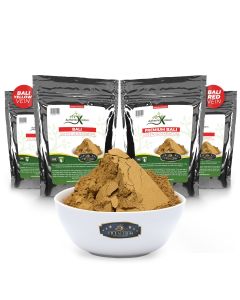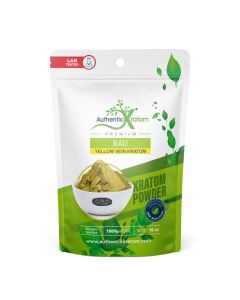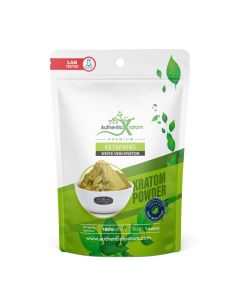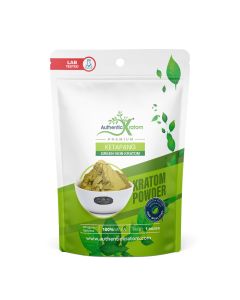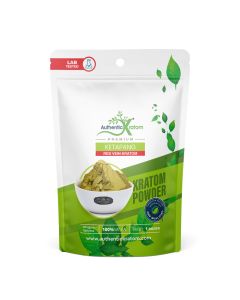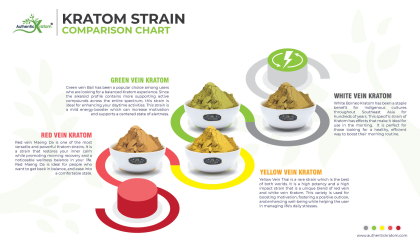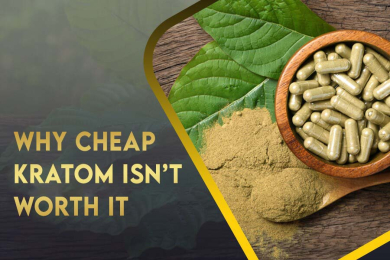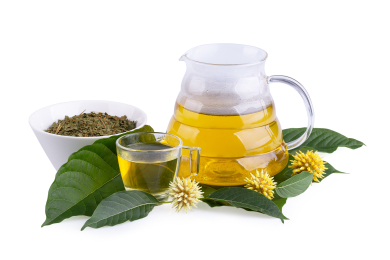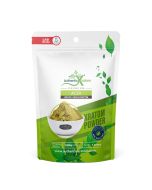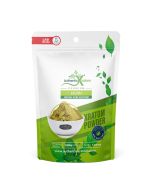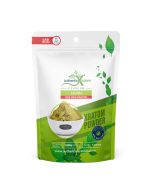- Buy any two kratom products, get 3rd one FREE
- There's No Minimum for Free Standard Shipping at Authentic Kratom
- Same Day Shipping. Order before 2:00 PM Pacific Time (M-F)
- Free Priority Mail Shipping on Orders $75 or more
- FREE 2 Day Shipping on orders $200 or more
- Buy Fresh & Potent Kratom Tea
The History of Kratom
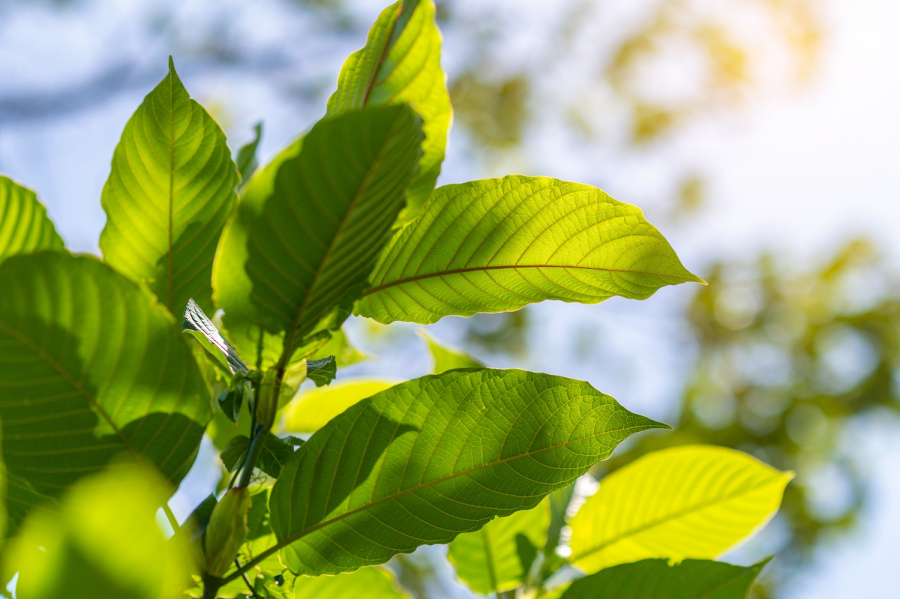
Why trust Authentic Kratom
- 10 years of experience in the kratom industry
- High expertise confirmed by a partnership with the American Kratom Association
- Only lab-tested and GMP-qualified products
- Reviewed and Trusted by thousands of customers
Table of Contents
- Possible Natural Remedy
- What Is Kratom?
- How Is Kratom Made?
- Origin And History of Kratom
- What Are Kratom Effects?
- Types of Kratom Powder and Kratom Extracts
- Kratom Vein Colours
- Kratom Leaves and Powder Vs Capsules and Kratom Tea - What Is The Difference?
- Kratom Side Effects And Health Hazards
- Is Kratom Safe?
- Is Kratom Addictive?
- Kratom Beginner Recommendations
There has never been an easier time to be alive, relatively speaking. Well, for most of us, at least.
Average life spans are increasing each year. Food has never been so abundant. Knowledge and information on any subject are just a simple click away. Medicine has never been so advanced.
But there are still a few things in life - various old practices, inventions, and traditions - that have never been improved on, beaten, or replicated and will stick around for a long time to come.
Modern self-driving cars are loaded with the latest incredible technology but still use mirrors to see behind. We can read global news instantly online, but most people enjoy a newspaper over a smartphone. Energy is pumped to us through pipes and cables, but nothing hits the spot quite like the satisfaction of a roaring log fire.
You can add to that list a magical little green leaf that grows both in the wild and is also heavily produced by kratom farmers in South East Asia. A leaf that has apparently been relieving discomfort and acting as an anti-depressant for centuries.
Possible Natural Remedy
An extraordinary natural herb (of sorts), gifted to us by mother nature that is stubbornly putting up a plucky fight against possibly harmful discomfort-relieving chemicals sometimes produced by big pharma.
People have been using this leaf as a staple discomfort reliever in Asia for a very long time - hundreds of years, in fact - but recently, this little miracle leaf is becoming popular in the west, with people who are nervous about succumbing to addiction from the strong, possibly dangerous drugs dispensed so freely.
These people swear by the effectiveness of this ground-up powder-dried wild leaf, with many users saying they will never again return to pharmaceuticals as long as they can get their hands on it.
While Kratom is not a reasonable alternative to carefully engineered pharmaceutical treatments, some people actually favour Kratom (and other natural products), over-prescription medicine. This is not something we would encourage or recommend, however. Professional medical advice should, of course, always be fully complied with.
Welcome, in case you didn't guess, to the wonderous thing that is Mitragyna Speciosa or, to use its more commonly known name, Kratom. Through this post, we are going to be looking at a brief history of kratom. With kratom consumption on the rise, let's also look at a few key points you probably need to be aware of.
What Is Kratom?
Kratom is a substance, or by-product, derived from the leaves of the Mitragyna speciosa, otherwise known as a kratom tree. Mitragyna speciosa is a tropical evergreen tree in the coffee family native to Southeast Asia. Traditional kratom use relates to chewing the raw leaf, but over the years, a range of kratom products have become available in various countries.
The history of kratom is pretty localized as an indigenous species of Thailand, Indonesia, Malaysia, Myanmar, and Papua New Guinea, where kratom use has been around as a herbal medicine since at least the nineteenth century.
There is anecdotal evidence that suggests villagers of those regions have been using Kratom for hundreds of years, although the history of kratom isn't documented too much beyond that.
Kratom has properties similar to a typical prescription opioid and some stimulant-like effects, but it should be noted that kratom is not an opioid in the true sense of the word - it just lands on the same opioid receptors in the brain, and there the similarities end. People from indigenous countries have been known for kratom use - in far higher doses - as an opium substitute.
Kratom is reported to have stimulant effects, depending on the type of kratom product you are taking. This is thought to derive from the kratom plants alkaloid, which contains the terpenoid mitragynine and 7 hydroxymitragynine.
How Is Kratom Made?
Kratom is hand-picked from the leaves of the Mitragyna speciosa tree in Southeast Asia. The leaves of the kratom plant are collected when they reach ideal maturity, where they are gathered and dried either naturally in the sun or through specialist dehumidifying ovens.
Different durations of drying are used to produce different powders. After the leaves are dried, they are then crushed into a fine powder - think something slightly more coarse than talcum powder, only green in color.
Origin And History of Kratom
Where Does Kratom Grow
Mitragyna speciosa kratom trees grow in tropical regions of Southeast Asia, such as Thailand, Malaysia, and Indonesia. All of these regions provide the much-needed climatic and environmental conditions necessary for the plant to thrive in the wild.
Kratom has been consumed in various ways by the people of that region for generations. In particular, kratom tea is often used by locals against discomfort and fatigue. It is also burned as incense in rituals due to its sedative effects.
Looking a little further back into the history of kratom to 1839, when Peter Willem Korthals, a botanist from the Dutch East India Service, discovered kratom trees under the name Stephegyne speciosa. Then, George Darby Haviland, a British surgeon, gave it the name we still know today in 1859.
More recently, this incredible natural product is becoming widespread in America, where kratom consumption is increasing, and consumed in many different ways other than tea through various kratom products available. The product is still imported from Southeast Asia to various countries worldwide, and while efforts have been made to grow the plant in other countries, they have mostly proved unsuccessful.
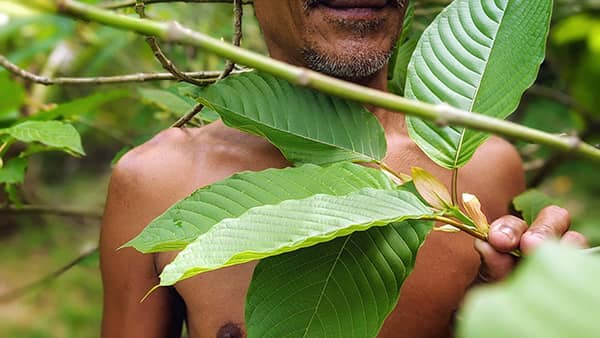

What Are Kratom Effects?
Studies on kratom are still ongoing, and its effects may vary from person to person. In addition, the effects can be quite different depending on the purity of the product and the way it is processed.
Judging by the user reviews and the content of kratom, regular kratom users report a calming, energising, discomfort-relieving effect. Many users use kratom for sleep. However, as we said, the effects can vary from person to person.
Generally speaking, most users who take a moderate dose report a slight mood change within an hour of taking kratom. Many people suggest kratom acts as a mood elevator, with some kratom use resulting in anti-depressant medication, according to user reviews.
Again, we should stress that the effects can vary from person to person, and there is absolutely no firm scientific evidence behind these claims.
Another commonly reported effect of taking kratom is a reduction in moderate discomfort of various degrees. Kratom is relatively popular with sufferers of back discomfort, for example.
Different strains of leaf result in different responses, feelings, and effects, and while some strains are reported to be more effective for discomfort relief, other strains are reported to work better for energy and verve.
Regardless of strain, the effects derive from the mitragynine and 7 hydroxymitragynine contained within the cell walls of the leaf, which in turn land on the brain's opioid receptors.
If you have a health problem, do not partake in kratom use without consulting your doctor.
Types of Kratom Powder and Kratom Extracts
There are three or four main types of kratom products, such as pills, powder, or tea, all of which stem from a dried leaf originally. Those leaves come in different colored 'veins,' which produce slightly different effects. Let's take a look in a little more detail.
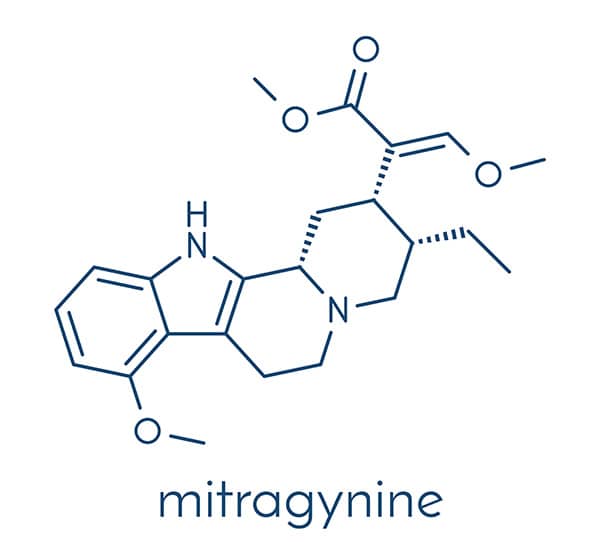

Kratom Vein Colours
- Red Vein Kratom: The red kratom strain is one of the most popular kratom strains. In particular, they can be the ideal choice for beginners. Leaves with red veins and stems are picked when the tree is mature, and leaves are ready to be plucked.
- They are kept under plenty of sunlight, sometimes UV lamps as well, when drying. Leaves can also be fermented, which is typically done when creating Bentuangie Kratom.
- Red kratom leaves are generally more recommended for users seeking relaxation rather than a stimulating effect. White and green kratom strains can be preferred to awaken the body and mind.
- Yellow Vein Kratom: An exotic related species from the Mitragyna species, this Yellow Vein Kratom was once known only to East Asian populations but has quickly become a worldwide valuable commodity in the past few years.
- One of the reasons why this particular yellow vein kratom and its products are so highly esteemed is because it is able to give the desired effects of relaxation to all its users without the sleep-inducing aspects of the other strains and varieties.
- It's brilliant shade of yellow is owed to the rich oriental earth and moist climate from which it grows, coupled with the distinct drying process used after harvesting its leaves. Because of the intricate drying method implemented with this rare strain of mood-enhancing kratom.
- It is also considered to be one of the most potent varieties found on the market. Studies have proven that its alkaloid content is approximately 20% higher than the other strains available, making it an even more effective choice for interested buyers.
- Green Vein Kratom: As far back as the emergence of red vein kratom, green vein kratom has also been accessible on the U.S. market. It is equally in high demand, and many Americans have embraced the wonders of its medicinal properties and its effects on their body.
- And like other kratom veins, it can be chewed, brewed as tea, taken as a powder, or even smoked. It also has a pleasant and relaxing aroma. Firstly, it is important you know how green vein kratom is sourced and processed.
- As a kratom tree matures, its leaves contain different levels of alkaloids build—you'll see a green hue of 'veins' that overlay the underneath of the leaves.
- The harvested leaves are then kept under sunlight, or sometimes A related exoticde the house till they dry out. When dry, the leaves may then be ground and processed into a powder
- White Vein Kratom: The White Vein Kratom strain comes from the Mitragyna species of the far southeast of Asia. Each colored strain of kratom has its specific chemical composition that will benefit you in multiple areas.
- This particular strain is seen as a modern-day tonic for its energising effects. And what better way to reap the effects of its harvested white stems and veins than through a finely ground powder form? Consuming whole kratom leaves will get you the same effects but at a much slower rate.
- Studies show that powdered products are much easier and quicker for the body to digest, as opposed to their raw and unprocessed counterparts. If you've been considering these options, one of our wide varieties of premium White Vein Kratom Powders.
What Is The Difference Between Kratom Color?
The color of the vein gives a clue about the maturity of the leaf. The red vein indicates that the leaf is mature, while the white vein indicates that the leaf is young.
Accordingly, different kratom colors mean that they have different chemical components and their effects on the body and mind are also different. Also, the way kratom leaves are harvested and dried can change the color of the product, its alkaloid content, and ultimately its effects.
For instance, the color of the Yellow Vein Kratom is thought to emerge during the drying process. As a result, these four different types of veins develop under different conditions and contain different alkaloid concentration rates. Each vein is suitable for a specific purpose.
Which Kratom Color Is The Best For You?
Which kratom color to use depends on the effects you need and what kind of life you live. However, it should not be forgotten that the effects of kratom are affected by many factors, such as the quality of kratom, the climate in which it is grown, and the harvest time.
Nevertheless, in general, the red color is suitable for those who seek analgesic effects and want to calm down; white color is suitable for those who want energy and focus; green color for those who want to overcome their social fears and gain energy; and finally, Yellow Vein Kratom is proper for those who do not want a bitter taste and do not want a stimulating effect as much as White Vein Kratom gives.
If you are undecided about which kratom color is best for you, you can start kratom with Kratom Variety Packs.
Here are some new products just added to our catalog
Kratom By Region:
Kratom strains are subspecies of kratom products. The species usually notes the geographic location from which the kratom comes, along with the vein color to indicate a particular growth characteristic of the kratom plant. Kratom strains can vary from region to region. You can see some examples below.
- Borneo
- Maeng Da
- Bali
- Vietnam
- Bentuangie
- Hulu Kapuas
- Thai Maeng Da
- Thai kratom
- Sumatra
- Riau
- Malay
- Kali
What Is The Difference Between Kratom Strains?
Kratom strains are generally divided into three different colors. Red vein, White vein or Green vein. This depends on the color of the stem and the vein of the leaf. This difference determines the effect of the kratom leaf on the mind and body.
A different color means a different effect and a different chemical composition. Different strains of kratom contain various alkaloids that produce their own effects.
Which Kratom Strain Is The Best For You?
Which one is right for you depends on the effect you want. Red for analgesic effect, green and white kratom for energy and focus can be preferred.
However, the effects can vary from person to person. You can find the most suitable kratom for you by experimenting with small doses.
Kratom Leaves and Powder Vs Capsules and Kratom Tea - What Is The Difference?
Powder, leaf form, pills, or tea? Let's take a look at the various kratom products available.
Kratom Leaves
- How to use kratom leaves? Kratom leaves are typically chewed, crushed, and made into tea or smoked. Kratom tea, especially, is one of the most popular uses in Southeast Asia, where for the vast history of kratom, chewing and boiling were the only methods of consumption.
- You can chew the fresh leaves, boil them and drink them.
- Pros and cons of leaves? Many users say that kratom tastes bad. Kratom is not a very tasty herb. Chewing or making tea can leave a bad taste in the mouth. Also, storing fresh leaves is more difficult than storing powder. Moreover, for some, it may be more work than capsules.
- One popular way of taking Kratom is to dissolve the powder in lemon or orange juice. This serves two purposes: firstly, the taste of the citrus helps to negate the bitter kratom taste. The idea, apparently, is to mix a little fresh lemon juice into a glass, fill it with water, and stir it before drinking.
- User report that adding lemon juice (known as a potentiator) will increase the effects of the kratom by breaking down the molecular walls. This isn't something we would particularly advise, but if you are going to go down this road, be sure to reduce the amount of kratom, as the effects will be stronger.
- When boiling fresh leaves, you should be careful about the heat. Excess heat can cause the kratom to lose its effectiveness. The aim is to heat the leaves just before boiling point and hold them at that temperature.
Kratom Powder
- How to use kratom powder? Kratom powder is obtained by crushing dried kratom leaves. You can add the powder to your food and drinks. Many people prefer to drink kratom powder with fruit juices, and it is often made as tea.
- Pros and cons of kratom powder? You always need to measure for the correct dose. This can be difficult for some people. Also, it may not be tasty for some.
- On the other hand, it is easier to find the exact dose you want with powder. Also, you can mix it with boosters like juice. Kratom Capsules
- How to use kratom capsules? You can simply swallow kratom capsules as a supplement. After you decide how much kratom to use and at what time of the day, you can use it as you wish.
- You can mix the powder in the capsules into your food and drink whenever you want.
- Pros and cons of capsules Capsules are the easiest way to use kratom. Kratom capsules are easy to carry and store. You can use the powder inside whenever you want. Still, some may prefer more traditional methods such as tea or incense.
Kratom Side Effects And Health Hazards
Although kratom is a product that spreads from day to day, its effects can vary from person to person. The side effects are not as harsh as some of the more dangerous drugs available from pharmacies - in this day and age, there are plenty of those - but side effects do exist for some users.
We should stress these side effects are not necessarily for all users. Some people might experience one or two of them, others quite a few, while others still, none at all.
Let's take a look at what they might be.
- weight loss
- dry mouth
- chills, nausea, and vomiting
- changes in urine and constipation
- liver damage
- muscle discomfort
- dizziness
- numbness
- hallucinations and delusions
- depression and delusion
- respiratory suppression
- psychological withdrawal symptoms
Is Kratom Safe?
Kratom is a substance that can have side effects. You should also be very careful about overdosing while using it. Currently, research is still being done on kratom, and there is not enough research to conclude firm findings.
However, most users say that they are satisfied with the effects of kratom. The safest would be to buy kratom from a trusted place and use it starting with small doses. If you have a health problem, talk to your doctor.
Is Kratom Addictive?
Kratom can lead to physical dependence if abused, and in that sense, it is no different from so many other things in life - alcohol is fine in moderation but can lead to alcohol dependence if abused, for example. Know your limits, and the chances of developing an addiction are slim. That said, users who have exceeded the recommended dose and not taken intermittent breaks have reported withdrawal symptoms.
The Drug Enforcement Administration has recently formed a view that kratom extracts are something of an illicit drug, being used mostly as a recreational psychoactive drug. There is no firm evidence to support this view, however. Indeed, the vast majority of kratom users do so for more sensible reasons.
In time, the drug enforcement administration might change this view, and as a result, Kratom will possibly become widely available in America, although for now, we can only speculate.
How To Use Kratom For discomfort Relief?
Between 4-6 grams of kratom has a discomfort-relieving effect. If you are using kratom for the first time, start at lower doses and gradually increase the dose. Find the dose you feel the discomfort relief effect for you.
How To Use Kratom For Opiate Withdrawal Symptoms?
Opioid withdrawal can make you experience troubling effects. Many people seek various ways to relieve its symptoms. Kratom is also one of the substances used to treat withdrawal. Kratom can relieve discomfort and is more readily available than prescription drugs for withdrawal.
A new study at the University of Florida also reveals that kratom may be used for opioid withdrawal. As a result of the research, the UF Scientists found that kratom provides significant discomfort-relieving benefits, reduces opioid withdrawal symptoms, and causes minimal respiratory depression.
Kratom users also talk about similar effects. Although kratom is feared to be addictive due to its opioid-like effects, it gives effective results when used carefully. The best way to do it is to make tea from kratom leaves.
This method has been used in Southeast Asia for decades, owing to the unique way in which the molecule targets the mu opioid receptor in the brain. UF research shows that even small doses can help with opioid withdrawal effects and prevent any possible effects one might expect with common psychoactive drugs.
How To Use Kratom For Relaxing?
Generally, small doses of kratom have a relaxing effect. Also, in Southeast Asia, people burn kratom as incense for its soothing effect. Consuming kratom with chamomile tea also increases its relaxing effect.
How To Use Kratom Without Getting Addicted?
The biggest reason for kratom addiction may be increased tolerance. It is recommended to use it from time to time by taking a break for a few days so that your body and mind do not get used to this substance.
Also, avoid long-term use of high doses of kratom. Used responsibly, kratom can be a wonderful remedy, with users reporting of life-changing effects. Sadly, there are also incidents of abuse with users becoming dose dependent through overindulgence.
In other words, this is a wonderful herb, but be very careful. In fairness, you could say that about many things in life - take it easy, don't get carried away, and you should be fine.
Kratom Beginner Recommendations
The most important recommendation for those new to using kratom would be to start with small doses. Kratom tea or incense can be ideal for a light start. On the other hand, while the pills provide convenience in terms of use, adding kratom powder to food and drinks will be more delicious.


